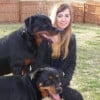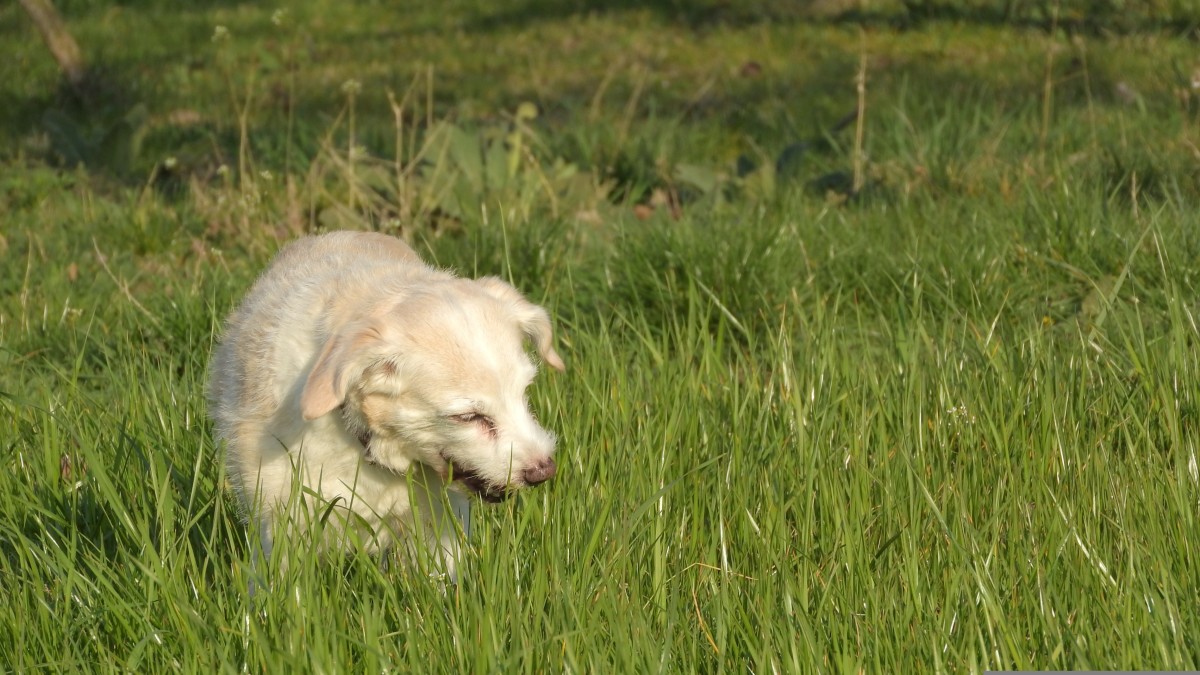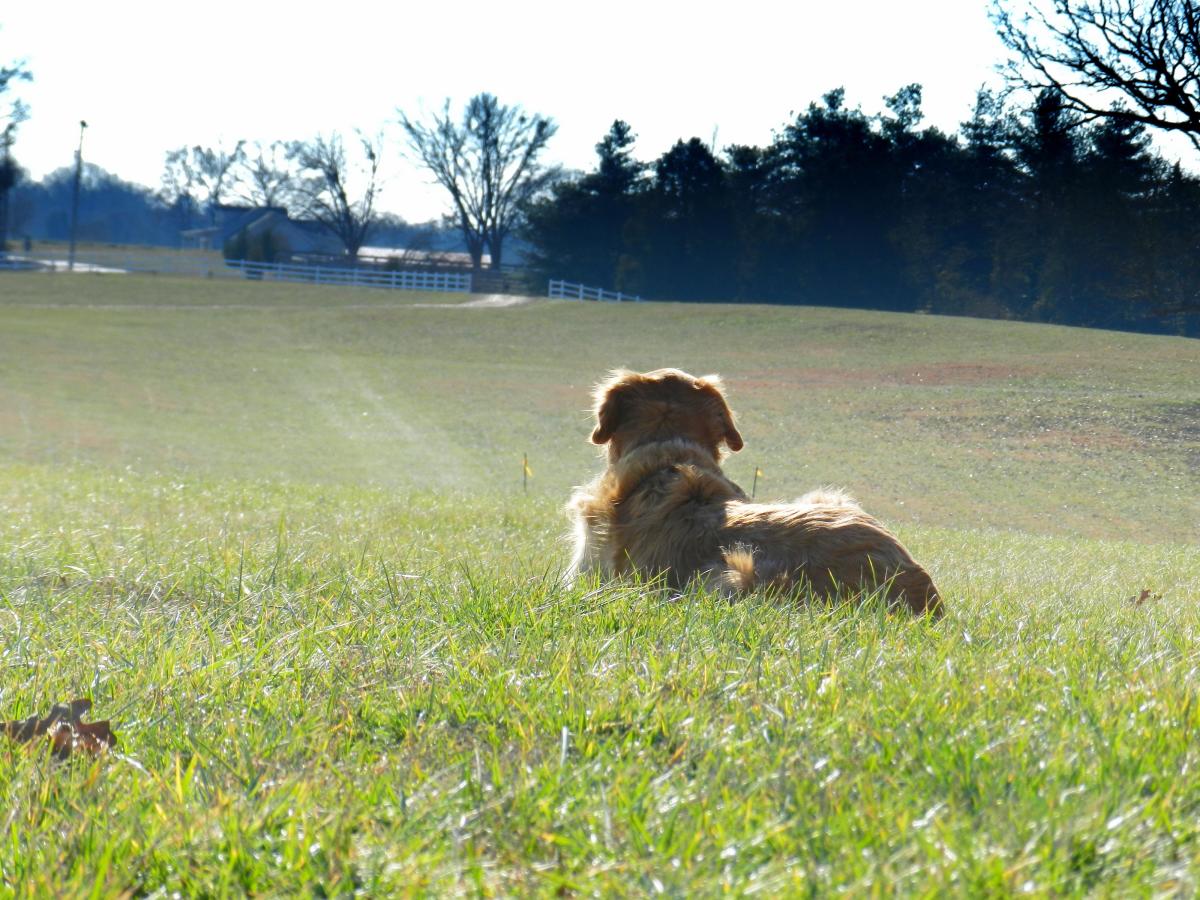Help for Owners of Dogs Jumping up on People and Guests
Train polite sits for greeting
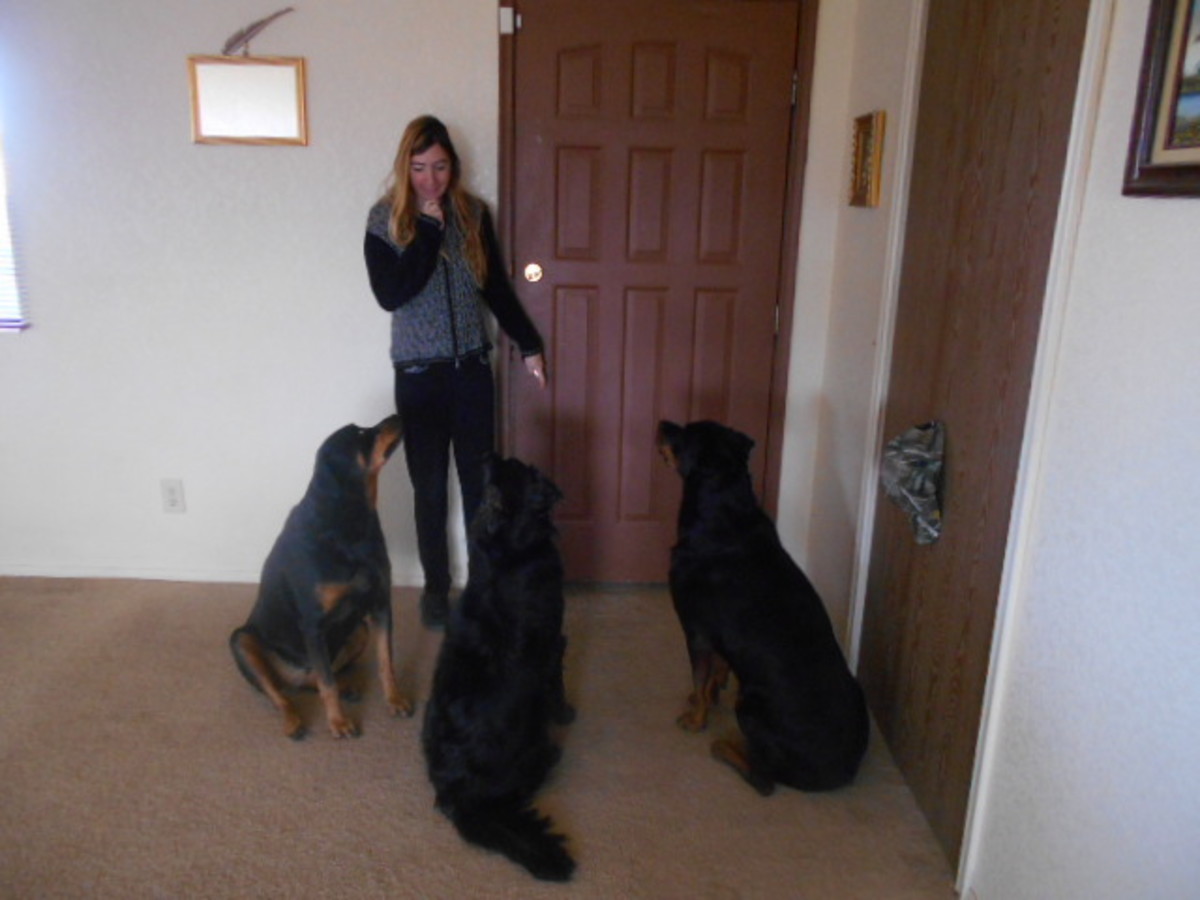
First, a Thought on "Cultural" Differences Between Dogs and Humans
Raise your hand if your dog jumps up on guests and you do not know what to do to solve the problem. At the same time though, you don't want to close your dog in a room as you want him to socialize and learn to be around your dog-loving guests, so what's left to do? Let's first understand better dog jumping so you can take the proper approach to work on the problem. Why do dogs jump in the first place?
Let's imagine for one moment the following scenario. You are a vendor for important machinery, and every time you find a buyer, you congratulate him for the purchase with a firm handshake and a friendly backslap. The buyer smiles back to you and thanks you. Your social behavior gives you a confidence boost as the way your buyers respond to it makes it reinforcing, so you continue to use this hand shaking and back slapping behavior after selling several products over the years.
One day, your boss tells you that you must go on a business trip to Japan and try to introduce the machinery to the locals. Your first buyer comes and you give him that energetic hand shake and friendly back slap to congratulate him of the purchase. The buyer seems embarrassed, smiles a bit and then leaves. "OK, you may think, he must be perhaps be an introvert person." The next buyer comes along, and you try again your energetic handshake and back slap. The buyer stops smiling and leaves as well. "Geez," you may think, "these Japanese buyers are quite cold here!" The last buyer almost seemed bothered by your behavior. You not only did the firm hand shake, but you emphasized the up and down movement, gave the back slap several times to emphasize your friendly intentions just to make sure he understands you are congratulating him. Yet, this last person seemed far from being content.So you stop doing it for some time and things seem to be better. Once back to the States though, you revert to your usual behavior, which was always positively perceived.
Fast forward a few months, and your boss now sends you now to the Middle East. His business is expanding globally, so you need to introduce the machinery to many different cultures. You sell several machines to a group of locals, so you decide to congratulate them one by one. The first person, is very limp in shaking your hand, the second pretends he doesn't see your hand but accepts the back slap,and the third even makes a disgusted face and just leaves you there with your hand suspended in the air. These people seem even worse than the Japanese! What gives?
Once back to the States, you discuss with your boss the odd behaviors you observed in your recent trips. Turns out you discover that in Japan, a firm handshake and back slapping is considered aggressive and that you were better off just giving a delicate handshake, or better, just bending down in a gracious bow. In the Middle East, things are even worse! A handshake with the left hand is offensive, as the left hand is considered to be dirty and unhygienic. No wonder those Middle Eastern men acted disgusted! Your boss therefore suggests to take a course in social etiquette before heading to a different country from now on.
A similar situations seems to unravel with our canine companions. In the dog world, jumping up brings them close to our faces and it's their way to say hello. Because people are taller than dogs, dog feel even more compelled to jump up. They start this behavior during early puppy hood with their moms and litter mates and continue it with humans where most people think it's cute, so if your puppy meets people who love puppies--and who does not! they will likely respond to his jumping by touching him, saying "Helloooo!" and even allowing him to lick their faces. Your pup thinks "That's so cool, these people understand me and even respond positively to my social greeting!" The behavior is soon reinforced, and the dog jumps more and more until he reaches 100 pounds and, ooops, his behavior is no longer considered cute.
Then one day, he meets a lady with an elegant suit, and he jumps on her. She quickly moves away and says "Oh no, you left muddy paw prints all over my suit!" Your dog is a bit surprised by her reaction, but she's the only one that behaved this way so far, so he carries on jumping on all your other friends who understand his behavior and are happy to greet him. Another day, he meets an older lady, and his jumping gets her a bit off balance and she pushes him away and says " Goodness gracious, get off of me, I was almost about to fall!" And then on another day, your dog jumps on a child and the child moves away abruptly and goes "Ouch!" You scratched all my arm!". Your dog may be a bit perplexed at this point, as it seems like some people do not like much his jumping, but they are still quite a minority, so the behavior of jumping is still kept alive by those who appreciate his jumping behavior. The behavior is still worthy to try, even if occasionally, he'll stumble on people who seem like they don't like it. It's the power of variety at play, after all, you keep on playing the slot machines even if you lose several times but win at others, so why shouldn't Fido?.
So there you have it. People from different countries having trouble communicating due to cultural differences, and dogs and humans going through something similar due to different styles of communicating. Dogs want to greet us in the only way they know, and the way that was previously reinforced since puppy hood. Humans are not consistent and respond in different ways and therefore owners desperately want to teach their dogs better behaviors so to avoid Rover from ruining expensive clothing, scaring people away or risking to knock over unstable people like the elderly and small children. So what steps can we take when dealing with a dog that has made of jumping up on guests a habit? Read on for some strategies.
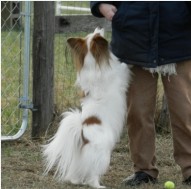
Use a baby gate as a management tool
Some Strategies to Reduce Jumping on Guests
Jumping on people may seem cute when dogs are puppies, but there's nothing cuter than puppies taught to sit for attention. It's really never too early to teach a puppy good manners, so there's no reason why puppy owners cannot start teaching them from scratch. Following are some ideas to help owners of dogs who love jumping on guests.
Magical Management
One of the biggest problems with jumping is that dogs who jump and receive attention, are allowed to rehearse the unwanted behavior more and more. And as we have seen, behaviors that are reinforced tend to repeat. So in order to avoid rehearsal we will need to implement the following management techniques:
- Avoid exposing your dog to people who reinforce the jumping. So if Uncle Jack loves to shower your dog with attention when he is standing up and licking his face, this needs to stop.
- If you do not have time to train or you have over guests who won't follow instructions, you are better off confining your dog to another room for the time being.
- If you are on a walk and you meet people, you can always prevent jumping by stepping on the leash. In this case, the leash is being used as a management tool. For safety, attach the leash to a dog harness and make sure there isn't enough to slack. It's not a bad idea to use a marker to mark the exact area you should step on to prevent the unwanted behavior. This way when you need to, you know right where you need to step on. Don't leave the handle of the leash though as if the leash slips from under your foot, your dog will be free to escape!
- Alternatively, you can use a baby gate so your dog can see your guests but is prevented from jumping on them.
Avoid Aversive Methods
What's the best way to teach a dog to not only jump but nip and bite as well? The best way for this recipe for disaster is by using physical, aversion-based methods. Pushing the dog away, grabbing his collar or squeezing his paws potentially lead to a dog that not only jumps, but will bite on top of that because he is perceiving that hands near him are bad. Using squirt bottles shock collars or no-jump harnesses may decrease the jumping behavior for some time, but the dog may revert to jumping when these tools are not used or some other behaviors may pop up their ugly head. After all, let's not forget that dogs learn through associations, if every time your dog sees a person, he is shocked or squirted in the face negative associations risk forming and anxious, defensive states may develop. And what makes it worse is that by punishing your dog for jumping, you will be punishing your dog from expressing joy and an eagerness to be with you or around other people. Fortunately, there are better ways to train a dog to stop jumping on people or guests.
Train Incompatible Behaviors
As humans, we may feel compelled to tell dogs not what to do, but dogs respond better when we tell them what to do instead. There are many behaviors that are incompatible with jumping. All you need to do is train them starting with low levels of distractions at first and then adding the distractions of people. In dog training lingo, this is known as "proofing."Following are some behaviors that are incompatible with jumping.
- A dog cannot jump if he is asked to sit on his four legs.
- A dog cannot jump if he is asked to lie down.
- A dog cannot jump if he is asked to stay at a distance.
- A dog cannot jump if he asked to rest on his mat.
- A dog cannot jump if he is asked to search for treats tossed by you or the guests.
The above trained behaviors may need some time to implement around distractions. In order to train them well, you will need to add the distractions gradually and keep your dog under threshold. If your dog is not capable of responding to a command or take food when he sees people, his training needs to be better proofed and he will need to work under threshold.
Lower the Threshold
So Rover cannot focus when there are people around? He doesn't listen and even spits out treats? If so, you need to lower his threshold levels. Following are some tips to lower your dog's threshold when he sees people or you have guests over.
- If the noise of the doorbell or a dog knock increases your dog's arousal, ask your guests to not knock or ring the bell.
- If the noise of a car parking in front of your house sends your dog over threshold, ask your guest to park at a distance.
- If your dog gets too excited and jumps when people talk to him, look at him or touch him, ask them to not touch, look or talk to your dog.
- If fast hand movements seem to elicit jumping, tell your guests to act calm and to keep their hands and arms relaxed.
While it may look like you are not curbing the problem when you avoid situations that send him over threshold, in reality you are preventing failure and setting him for success. While he may not be ready to deal with certain situations as of yet, you will get to a point where you can work him through distractions by simply desensitizing him towards triggers.
Desensitize to Triggers
Some dogs jump exclusively on certain people or jump on them when they do certain things. Try to see if there is a pattern going on. Does your dog jump more on kids? Does he get more excited when he hears female voices? Do hand movements entice him to jump? Does the noise of the doorbell send him over threshold? Once you find out a predictable trigger, try to gradually desensitize him to that. Desensitization takes place when you gradually expose your dog to situations and triggers by presenting them in a less salient manner. So if for instance, your dog can't contain himself when he meets kids, let him see them from the window or at a distance behind a baby gate and ask him to sit. Praise him and reward him with treats when he shows self control at a distance. Does your dog lose his head when he hears a female voice? Ask him to sit when you have a female friend talk from another room. Does the doorbell drive him nuts with anticipation? Ring it when there are no guests over, with time, he will no longer start associating it with guests. Afterward, ask your to sit upon hearing it at a distance from the door. Do hand movements elicit jumping? Desensitize him to them by introducing them gradually, you can even make hand movements a cue to sit.
Give Attention when Not Jumping
And now comes one of the most effective strategies: not giving attention when the dog is jumping. So every time your dog jumps on guests, tell them to turn their back swiftly and turn boring, cross their arm and pretend to become a pole. Dogs don't jump on poles, and that's because they are boring. If he continues to jump towards your guest's back, tell your guest to move away to unbalance your dog and even leave the room. When the dog stops jumping, the guest can turn around and praise him and give a treat. If praise increases arousal though, tell the guest to be quiet and reward by just tossing treats to the ground at a distance. As the dog gets good at this, your guest can ask your dog to sit for treats (or you can). It's best if the guest tosses the treats on the ground instead of hand feeding them. This let's the dog's energy focus on the floor rather than up towards the guest.
Even Negative Attention is Attention!
You may think that it helps to push the dog away or tell him "no jump," but in most cases, this does not work, why? As mentioned, dogs continue behaviors that are reinforced. So if you are out all day and your dog craves company badly, even if you touch him or scold him, that's for him a form of attention. Pushing away also often increases arousal, and the dog will come back jumping for more. Many times, high levels of excitement are caused by little stimulation and exercise during the day, try walking your dog and engaging him in mentally stimulating games each day, especially prior to your your or your guest's arrival.
Use a Positive Interrupter
If your dog is near guests and you notice he is getting a tad bit excited, catch him before he jumps and interrupt the behavior using a positive interrupter. I like to use a smacking noise for this. I first train the dog to respond to it in a quiet area of the home, then I add distractions. I make a smacking noise with my mouth and follow it with treats several times. I use this smacking noise to interrupt any unwanted behaviors, so it comes handy for when you notice your dog is getting a bit excited towards guests and you want him to come back to you.
Invite the Right People Over
Now, it's time to schedule a non-jumping party! Invite over some volunteers and tell them what the rules are. You can tell them to come in the door and if your dog jumps, they must turn their backs and freeze. If the dog jumps on their back, they leave. If the dog doesn't jump they can praise if the dog doesn't get too excited and toss a high-value treat and repeat several times with other guests. Once your dog is not jumping, you can then ask your guests to come in and ask for a sit and praise and reward that by tossing a treat. If your dog is quite large, and you are afraid he may knock people over, install a baby gate and let your dog meet them behind it. If the dog jumps on the baby gate, the person leaves, if the dog sits behind it, let them toss him a treat. After seeing many people who do not reinforce jumping with attention and who reinforce sitting instead, your dog will start generalizing them with other visitors so he should be jumping less and less, just as the vendor mentioned previously learned that firm handshaking was not accepted well by Japanese and that bows worked much better. Be aware though, that it takes just one or a handful of people that reward jumping with attention that will bring you back to square one, so you must be very strict on the no-attention-when jumping policy! Be an ambassador for your dog and help him succeed by exposing him to the right people!
Be Aware of Extinction Bursts
If your dog was used to meeting people who gave attention while your dog was jumping, you may see some extinction bursts along the way. It's good to be aware of these as they may seem to you an indication that your training at some point is not working. What are extinction bursts? If your dog was used to receiving attention often when he jumped, the moment people start turning their backs to your dog will leave him baffled. "Hey, what's up with you? Everybody gave me attention when I stood up! Do you see me? I am hear, look at me! Woo hoo! and your dog may start jumping at this point and the jumping may even increase in intensity, or your dog may even add barking to vent his frustration or try something new to grab attention. If you keep up the training with people turning their backs in spite of the extinction burst, your dog will eventually get it that attention now is no longer given when he's on two feet, but only when he is on four.
Train Better Impulse Control
A lot of dogs who jump may also benefit from learning more impulse control. The Premack principle may help to gain better control since it teaches dogs to perform a behavior before attaining what they want. I particularly like Dee Ganley's games for impulse control. She calls it the "chill out game' and it's a good game for lowering arousal in jumpers. I also like to train a good "front command" where I put the dog in sit stay and call him to me. The dog comes running to me and right when he is front of me I ask for a sit.
Enroll a Professional
Last but not least, please enroll a professional to help you out. Behavior modification and training at times comes with some risks. Not all jumping is necessarily friendly. If your dog doesn't like people or is anxious or stressed around them, he may jump on them as a way to increase distance and send them away. If this is the case, the jumping will actually increase if it causes the people to turn their backs and leave, which is what you do not want! This would take a totally different approach. Also, in some cases, the frustration caused by the extinction burst may cause some dogs to get rough or even aggressive. So play it safe, and enroll a force-free professional to help you out.
Disclaimer: this article is not a substitute for hands-on behavior advice. Behavior modification and training comes with some risks.For safety, enroll a force-free behavior professional to help you out.
Alexadry© all rights reserved, do not copy.
KIKOPUP Emily Larlham explains the positive interrupter
For further reading
- Why Growling Should Never be Suppressed in Dogs
Learn why you should avoid punishing or correcting your dog for growling. - Why Dogs Do Not Like to be Hugged
Do dogs like hugs? Most likely they do not, especially when they come from a stranger. Learn signs of stress dogs give upon being hugged and why you should never hug a dog you do not know. - Understanding Dog Calming Signals
What are calming signals in dogs and when are they displayed? Crack the code to understanding and speaking - Dog Behavior: Why is my Dog Eager to be Pet one Minu...
Is your dog accepting of your friend's petting and then upset the next? Learn possible explanations for your dog's unpredictable behaviors. - Pet Your Dog for a Daily Exchange of Oxytocin
Owning dogs provides many benefits and studies also suggest that positive social interactions increase the levels of oxytocin in dogs and humans. Another reason to reap the rewards of dog ownership. - How To Play the Treat and Retreat Game with Your Dog
Learn how the treat and retreat game may benefit your dog and how to teach it. This game is great for those somewhat reactive dogs who would benefit from some behavior modification. - Signs a Dog is not Enjoying Petting and is About to ...
What are some signs a dog is about to bite? Learn how to avoid putting yourself at risk, when dogs should not be pet and the warning signs of an impending dog bite.
